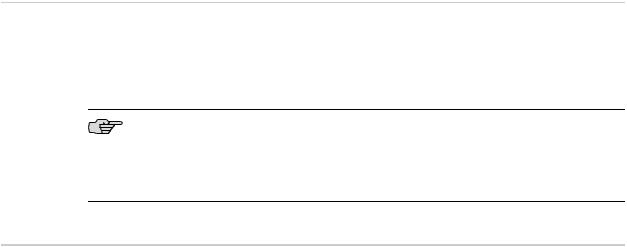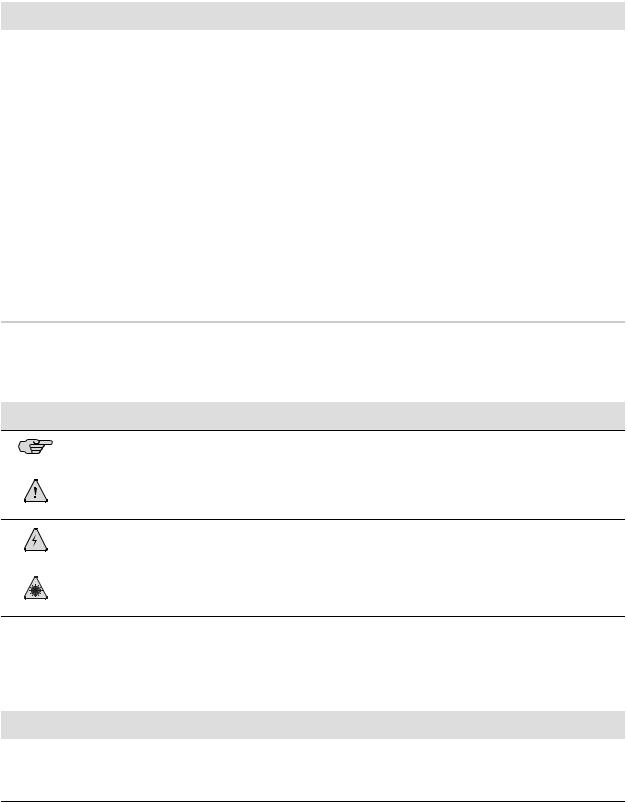Juniper Networks J2350 User Manual

JUNOS® Software with Enhanced Services
Hardware Guide
for J-series Services Routers
Release 9.2
Juniper Networks, Inc.
1194 North Mathilda Avenue
Sunnyvale, California 94089
USA
408-745-2000
www.juniper.net
Part Number: 530-025664-01, Revision 1
This product includes the Envoy SNMP Engine, developed by Epilogue Technology, an Integrated Systems Company. Copyright © 1986-1997, Epilogue Technology Corporation. All rights reserved. This program and its documentation were developed at private expense, and no part of them is in the public domain.
This product includes memory allocation software developed by Mark Moraes, copyright © 1988, 1989, 1993, University of Toronto.
This product includes FreeBSD software developed by the University of California, Berkeley, and its contributors. All of the documentation and software included in the 4.4BSD and 4.4BSD-Lite Releases is copyrighted by the Regents of the University of California. Copyright © 1979, 1980, 1983, 1986, 1988, 1989, 1991, 1992, 1993, 1994. The Regents of the University of California. All rights reserved.
GateD software copyright © 1995, the Regents of the University. All rights reserved. Gate Daemon was originated and developed through release 3.0 by Cornell University and its collaborators. Gated is based on Kirton’s EGP, UC Berkeley’s routing daemon (routed), and DCN’s HELLO routing protocol. Development of Gated has been supported in part by the National Science Foundation. Portions of the GateD software copyright © 1988, Regents of the University of California. All rights reserved. Portions of the GateD software copyright © 1991, D. L. S. Associates.
This product includes software developed by Maker Communications, Inc., copyright © 1996, 1997, Maker Communications, Inc.
Juniper Networks, the Juniper Networks logo, NetScreen, and ScreenOS are registered trademarks of Juniper Networks, Inc. in the United States and other countries. JUNOS and JUNOSe are trademarks of Juniper Networks, Inc. All other trademarks, service marks, registered trademarks, or registered service marks are the property of their respective owners.
Juniper Networks assumes no responsibility for any inaccuracies in this document. Juniper Networks reserves the right to change, modify, transfer, or otherwise revise this publication without notice.
Products made or sold by Juniper Networks or components thereof might be covered by one or more of the following patents that are owned by or licensed to Juniper Networks: U.S. Patent Nos. 5,473,599, 5,905,725, 5,909,440, 6,192,051, 6,333,650, 6,359,479, 6,406,312, 6,429,706, 6,459,579, 6,493,347, 6,538,518, 6,538,899, 6,552,918, 6,567,902, 6,578,186, and 6,590,785.
JUNOS Software with Enhanced Services Hardware Guide
Release 9.2
Copyright © 2008, Juniper Networks, Inc.
All rights reserved. Printed in USA.
Revision History
August 2008—Revision 1
The information in this document is current as of the date listed in the revision history.
YEAR 2000 NOTICE
Juniper Networks hardware and software products are Year 2000 compliant. The JUNOS software has no known time-related limitations through the year 2038. However, the NTP application is known to have some difficulty in the year 2036.
SOFTWARE LICENSE
The terms and conditions for using this software are described in the software license contained in the acknowledgment to your purchase order or, to the extent applicable, to any reseller agreement or end-user purchase agreement executed between you and Juniper Networks. By using this software, you indicate that you understand and agree to be bound by those terms and conditions. Generally speaking, the software license restricts the manner in which you are permitted to use the software and may contain prohibitions against certain uses. The software license may state conditions under which the license is automatically terminated. You should consult the license for further details. For complete product documentation, please see the Juniper Networks Web site at www.juniper.net/techpubs.
ii ■
End User License Agreement
READ THIS END USER LICENSE AGREEMENT (“AGREEMENT”) BEFORE DOWNLOADING, INSTALLING, OR USING THE SOFTWARE. BY DOWNLOADING, INSTALLING, OR USING THE SOFTWARE OR OTHERWISE EXPRESSING YOUR AGREEMENT TO THE TERMS CONTAINED HEREIN, YOU (AS CUSTOMER OR IF YOU ARE NOT THE CUSTOMER, AS A REPRESENTATIVE/AGENT AUTHORIZED TO BIND THE CUSTOMER) CONSENT TO BE BOUND BY THIS AGREEMENT. IF YOU DO NOT OR CANNOT AGREE TO THE TERMS CONTAINED HEREIN, THEN (A) DO NOT DOWNLOAD, INSTALL, OR USE THE SOFTWARE, AND (B) YOU MAY CONTACT JUNIPER NETWORKS REGARDING LICENSE TERMS.
1.The Parties. The parties to this Agreement are Juniper Networks, Inc. and its subsidiaries (collectively “Juniper”), and the person or organization that originally purchased from Juniper or an authorized Juniper reseller the applicable license(s) for use of the Software (“Customer”) (collectively, the “Parties”).
2.The Software. In this Agreement, “Software” means the program modules and features of the Juniper or Juniper-supplied software, and updates and releases of such software, for which Customer has paid the applicable license or support fees to Juniper or an authorized Juniper reseller. “Embedded Software” means Software which Juniper has embedded in the Juniper equipment.
3.License Grant. Subject to payment of the applicable fees and the limitations and restrictions set forth herein, Juniper grants to Customer a non-exclusive and non-transferable license, without right to sublicense, to use the Software, in executable form only, subject to the following use restrictions:
a.Customer shall use the Embedded Software solely as embedded in, and for execution on, Juniper equipment originally purchased by Customer from Juniper or an authorized Juniper reseller.
b.Customer shall use the Software on a single hardware chassis having a single processing unit, or as many chassis or processing units for which Customer has paid the applicable license fees; provided, however, with respect to the Steel-Belted Radius or Odyssey Access Client software only, Customer shall use such Software on a single computer containing a single physical random access memory space and containing any number of processors. Use of the Steel-Belted Radius software on multiple computers requires multiple licenses, regardless of whether such computers are physically contained on a single chassis.
c.Product purchase documents, paper or electronic user documentation, and/or the particular licenses purchased by Customer may specify limits to Customer’s use of the Software. Such limits may restrict use to a maximum number of seats, registered endpoints, concurrent users, sessions, calls, connections, subscribers, clusters, nodes, realms, devices, links, ports or transactions, or require the purchase of separate licenses to use particular features, functionalities, services, applications, operations, or capabilities, or provide throughput, performance, configuration, bandwidth, interface, processing, temporal, or geographical limits. In addition, such limits may restrict the use of the Software to managing certain kinds of networks or require the Software to be used only in conjunction with other specific Software. Customer’s use of the Software shall be subject to all such limitations and purchase of all applicable licenses.
d.For any trial copy of the Software, Customer’s right to use the Software expires 30 days after download, installation or use of the Software. Customer may operate the Software after the 30-day trial period only if Customer pays for a license to do so. Customer may not extend or create an additional trial period by re-installing the Software after the 30-day trial period.
e.The Global Enterprise Edition of the Steel-Belted Radius software may be used by Customer only to manage access to Customer’s enterprise network. Specifically, service provider customers are expressly prohibited from using the Global Enterprise Edition of the Steel-Belted Radius software to support any commercial network access services.
The foregoing license is not transferable or assignable by Customer. No license is granted herein to any user who did not originally purchase the applicable license(s) for the Software from Juniper or an authorized Juniper reseller.
4.Use Prohibitions. Notwithstanding the foregoing, the license provided herein does not permit the Customer to, and Customer agrees not to and shall not: (a) modify, unbundle, reverse engineer, or create derivative works based on the Software; (b) make unauthorized copies of the Software (except as necessary for backup purposes); (c) rent, sell, transfer, or grant any rights in and to any copy of the Software, in any form, to any third party; (d) remove any proprietary notices, labels, or marks on or in any copy of the Software or any product in which the Software is embedded; (e) distribute any copy of the Software to any third party, including as may be embedded in Juniper equipment sold in the secondhand market; (f) use any ‘locked’ or key-restricted feature, function, service, application, operation, or capability without first purchasing the applicable license(s) and obtaining a valid key from Juniper, even if such feature, function, service, application, operation, or capability is enabled without a key; (g) distribute any key for the Software provided by Juniper to any third party; (h) use the Software in any manner that extends or is broader than the uses purchased by Customer from Juniper or an authorized Juniper reseller; (i) use the Embedded Software on non-Juniper equipment; (j) use the Software (or make it available for use) on Juniper equipment that the Customer did not originally purchase from Juniper or an authorized Juniper reseller; (k) disclose the results of testing or benchmarking of the Software to any third party without the prior written consent of Juniper; or (l) use the Software in any manner other than as expressly provided herein.
5.Audit. Customer shall maintain accurate records as necessary to verify compliance with this Agreement. Upon request by Juniper, Customer shall furnish such records to Juniper and certify its compliance with this Agreement.
6.Confidentiality. The Parties agree that aspects of the Software and associated documentation are the confidential property of Juniper. As such, Customer shall exercise all reasonable commercial efforts to maintain the Software and associated documentation in confidence, which at a minimum includes restricting access to the Software to Customer employees and contractors having a need to use the Software for Customer’s internal business purposes.
■iii
7.Ownership. Juniper and Juniper's licensors, respectively, retain ownership of all right, title, and interest (including copyright) in and to the Software, associated documentation, and all copies of the Software. Nothing in this Agreement constitutes a transfer or conveyance of any right, title, or interest in the Software or associated documentation, or a sale of the Software, associated documentation, or copies of the Software.
8.Warranty, Limitation of Liability, Disclaimer of Warranty. The warranty applicable to the Software shall be as set forth in the warranty statement that accompanies the Software (the “Warranty Statement”). Nothing in this Agreement shall give rise to any obligation to support the Software. Support services may be purchased separately. Any such support shall be governed by a separate, written support services agreement. TO THE MAXIMUM EXTENT PERMITTED BY LAW, JUNIPER SHALL NOT BE LIABLE FOR ANY LOST PROFITS, LOSS OF DATA, OR COSTS OR PROCUREMENT OF SUBSTITUTE GOODS OR SERVICES, OR FOR ANY SPECIAL, INDIRECT, OR CONSEQUENTIAL DAMAGES ARISING OUT OF THIS AGREEMENT, THE SOFTWARE, OR ANY JUNIPER OR JUNIPER-SUPPLIED SOFTWARE. IN NO EVENT SHALL JUNIPER BE LIABLE FOR DAMAGES ARISING FROM UNAUTHORIZED OR IMPROPER USE OF ANY JUNIPER OR JUNIPER-SUPPLIED SOFTWARE. EXCEPT AS EXPRESSLY PROVIDED IN THE WARRANTY STATEMENT TO THE EXTENT PERMITTED BY LAW, JUNIPER DISCLAIMS ANY AND ALL WARRANTIES IN AND TO THE SOFTWARE (WHETHER EXPRESS, IMPLIED, STATUTORY, OR OTHERWISE), INCLUDING ANY IMPLIED WARRANTY OF MERCHANTABILITY, FITNESS FOR A PARTICULAR PURPOSE, OR NONINFRINGEMENT. IN NO EVENT DOES JUNIPER WARRANT THAT THE SOFTWARE, OR ANY EQUIPMENT OR NETWORK RUNNING THE SOFTWARE, WILL OPERATE WITHOUT ERROR OR INTERRUPTION, OR WILL BE FREE OF VULNERABILITY TO INTRUSION OR ATTACK. In no event shall Juniper’s or its suppliers’ or licensors’ liability to Customer, whether in contract, tort (including negligence), breach of warranty, or otherwise, exceed the price paid by Customer for the Software that gave rise to the claim, or if the Software is embedded in another Juniper product, the price paid by Customer for such other product. Customer acknowledges and agrees that Juniper has set its prices and entered into this Agreement in reliance upon the disclaimers of warranty and the limitations of liability set forth herein, that the same reflect an allocation of risk between the Parties (including the risk that a contract remedy may fail of its essential purpose and cause consequential loss), and that the same form an essential basis of the bargain between the Parties.
9.Termination. Any breach of this Agreement or failure by Customer to pay any applicable fees due shall result in automatic termination of the license granted herein. Upon such termination, Customer shall destroy or return to Juniper all copies of the Software and related documentation in Customer’s possession or control.
10.Taxes. All license fees for the Software are exclusive of taxes, withholdings, duties, or levies (collectively “Taxes”). Customer shall be responsible for paying Taxes arising from the purchase of the license, or importation or use of the Software.
11.Export. Customer agrees to comply with all applicable export laws and restrictions and regulations of any United States and any applicable foreign agency or authority, and not to export or re-export the Software or any direct product thereof in violation of any such restrictions, laws or regulations, or without all necessary approvals. Customer shall be liable for any such violations. The version of the Software supplied to Customer may contain encryption or other capabilities restricting Customer’s ability to export the Software without an export license.
12.Commercial Computer Software. The Software is “commercial computer software” and is provided with restricted rights. Use, duplication, or disclosure by the United States government is subject to restrictions set forth in this Agreement and as provided in DFARS 227.7201 through 227.7202-4, FAR 12.212, FAR 27.405(b)(2), FAR 52.227-19, or FAR 52.227-14(ALT III) as applicable.
13.Interface Information. To the extent required by applicable law, and at Customer's written request, Juniper shall provide Customer with the interface information needed to achieve interoperability between the Software and another independently created program, on payment of applicable fee, if any. Customer shall observe strict obligations of confidentiality with respect to such information and shall use such information in compliance with any applicable terms and conditions upon which Juniper makes such information available.
14.Third Party Software. Any licensor of Juniper whose software is embedded in the Software and any supplier of Juniper whose products or technology are embedded in (or services are accessed by) the Software shall be a third party beneficiary with respect to this Agreement, and such licensor or vendor shall have the right to enforce this Agreement in its own name as if it were Juniper. In addition, certain third party software may be provided with the Software and is subject to the accompanying license(s), if any, of its respective owner(s). To the extent portions of the Software are distributed under and subject to open source licenses obligating Juniper to make the source code for such portions publicly available (such as the GNU General Public License (“GPL”) or the GNU Library General Public License (“LGPL”)), Juniper will make such source code portions (including Juniper modifications, as appropriate) available upon request for a period of up to three years from the date of distribution. Such request can be made in writing to Juniper Networks, Inc., 1194 N. Mathilda Ave., Sunnyvale, CA 94089, ATTN: General Counsel. You may obtain a copy of the GPL at http://www.gnu.org/licenses/gpl.html, and a copy of the LGPL at http://www.gnu.org/licenses/lgpl.html.
15.Miscellaneous. This Agreement shall be governed by the laws of the State of California without reference to its conflicts of laws principles. The provisions of the U.N. Convention for the International Sale of Goods shall not apply to this Agreement. For any disputes arising under this Agreement, the Parties hereby consent to the personal and exclusive jurisdiction of, and venue in, the state and federal courts within Santa Clara County, California. This Agreement constitutes the entire and sole agreement between Juniper and the Customer with respect to the Software, and supersedes all prior and contemporaneous agreements relating to the Software, whether oral or written (including any inconsistent terms contained in a purchase order), except that the terms of a separate written agreement executed by an authorized Juniper representative and Customer shall govern to the extent such terms are inconsistent or conflict with terms contained herein. No modification to this Agreement nor any waiver of any rights hereunder shall be effective unless expressly assented to in writing by the party to be charged. If any portion of this Agreement is held invalid, the Parties agree that such invalidity shall not affect the validity of the remainder of this Agreement. This Agreement and associated documentation has been written in the English language, and the Parties agree that the English version will govern. (For Canada: Les parties aux présentés confirment leur volonté que cette convention de même que tous les documents y compris tout avis qui s'y rattaché, soient redigés en langue anglaise. (Translation: The parties confirm that this Agreement and all related documentation is and will be in the English language)).
iv ■

Abbreviated Table of Contents
|
About This Guide |
xv |
Part 1 |
Services Router Overview |
|
Chapter 1 |
Overview of Services Routers |
3 |
Chapter 2 |
J-series Services Router Hardware Features |
7 |
Chapter 3 |
PIM Overview |
35 |
Part 2 |
Installing a Services Router |
|
Chapter 4 |
Preparing for Router Installation |
63 |
Chapter 5 |
Installing and Connecting a Services Router |
77 |
Chapter 6 |
Establishing Basic Connectivity |
91 |
Chapter 7 |
Installing JUNOS Software with Enhanced Services |
115 |
Part 3 |
Maintaining Services Router Hardware |
|
Chapter 8 |
Replacing Hardware Components |
119 |
Chapter 9 |
Troubleshooting a Services Router |
157 |
Chapter 10 |
Contacting Customer Support and Returning Hardware |
169 |
Part 4 |
J-series Requirements and Specifications |
|
Chapter 11 |
Network Cable Specifications and Connector Pinouts |
179 |
Chapter 12 |
Safety and Regulatory Compliance Information |
197 |
Part 5 |
Index |
|
|
Index |
241 |
Abbreviated Table of Contents |
■ |
v |
JUNOS Software with Enhanced Services Hardware Guide
vi ■

Table of Contents |
|
|
|
About This Guide |
xv |
|
Objectives ...................................................................................................... |
xv |
|
Audience ....................................................................................................... |
xv |
|
Supported Routing Platforms ........................................................................ |
xvi |
|
How to Use This Manual ............................................................................... |
xvi |
|
Document Conventions .............................................................................. |
xviii |
|
JUNOS Software Documentation for J-series Services Routers and SRX-series |
|
|
Services Gateways ................................................................................... |
xx |
|
Documentation Feedback ............................................................................. |
xxi |
|
Requesting Technical Support ...................................................................... |
xxii |
Part 1 |
Services Router Overview |
|
Chapter 1 |
Overview of Services Routers |
3 |
|
J2320 Services Router Overview ..................................................................... |
3 |
|
J2350 Services Router Overview ..................................................................... |
4 |
|
J4350 Services Router Overview ..................................................................... |
5 |
|
J6350 Services Router Overview ..................................................................... |
6 |
Chapter 2 |
J-series Services Router Hardware Features |
7 |
|
J2320 and J2350 Services Router Hardware Features ...................................... |
7 |
|
J2320 and J2350 Chassis ........................................................................... |
8 |
|
J2320 and J2350 Midplane ...................................................................... |
12 |
|
J2320 and J2350 Routing Engine Hardware ............................................ |
12 |
|
J2320 and J2350 Boot Devices ................................................................ |
12 |
|
J2320 and J2350 Front Panel .................................................................. |
13 |
|
Physical Interface Modules (PIMs) .................................................... |
14 |
|
Power Button and POWER LED ........................................................ |
14 |
|
STATUS LED ..................................................................................... |
15 |
|
ALARM LED ...................................................................................... |
15 |
|
HA LED ............................................................................................ |
16 |
|
RESET CONFIG Button ..................................................................... |
16 |
|
Built-In Gigabit Ethernet Ports .......................................................... |
17 |
|
Console Port ..................................................................................... |
17 |
|
AUX Port .......................................................................................... |
17 |
|
USB Port ........................................................................................... |
17 |
Table of Contents |
■ |
vii |

JUNOS Software with Enhanced Services Hardware Guide
|
J2320 and J2350 External Compact Flashes ............................................ |
18 |
|
J2320 Power System ............................................................................... |
18 |
|
J2350 Power System ............................................................................... |
18 |
|
J2320 and J2350 Cooling System ............................................................ |
19 |
|
J4350 and J6350 Services Router Hardware Features .................................... |
20 |
|
J4350 and J6350 Chassis ......................................................................... |
21 |
|
J4350 and J6350 Midplane ...................................................................... |
25 |
|
J4350 and J6350 Routing Engine Hardware ............................................ |
25 |
|
J4350 and J6350 Boot Devices ................................................................ |
25 |
|
J4350 and J6350 Front Panel .................................................................. |
26 |
|
Physical Interface Modules (PIMs) .................................................... |
26 |
|
Power Button and POWER LED ........................................................ |
27 |
|
STATUS LED ..................................................................................... |
27 |
|
ALARM LED ...................................................................................... |
28 |
|
HA LED ............................................................................................ |
29 |
|
RESET CONFIG Button ..................................................................... |
29 |
|
Built-In Gigabit Ethernet Ports .......................................................... |
29 |
|
Console Port ..................................................................................... |
30 |
|
AUX Port .......................................................................................... |
30 |
|
USB Port ........................................................................................... |
30 |
|
J4350 Power System ............................................................................... |
30 |
|
J6350 Power System ............................................................................... |
31 |
|
J4350 and J6350 Cooling System ............................................................ |
32 |
Chapter 3 |
PIM Overview |
35 |
|
PIM Terms ..................................................................................................... |
35 |
|
Field-Replaceable PIMs .................................................................................. |
38 |
|
J2320 and J2350 Field-Replaceable PIM and Module Summary .............. |
38 |
|
J4350 and J6350 Field-Replaceable PIM Summary .................................. |
39 |
|
1-Port, 6-Port, 8-Port, and 16-Port Gigabit Ethernet uPIMs ...................... |
41 |
|
1-Port Gigabit Ethernet ePIMs ................................................................. |
44 |
|
Dual-Port Serial PIM ................................................................................ |
47 |
|
Dual-Port T1 or E1 PIM ........................................................................... |
48 |
|
Dual-Port Channelized T1/E1/ISDN PRI PIM ............................................ |
49 |
|
T3 or E3 PIM ........................................................................................... |
51 |
|
Dual-Port Fast Ethernet PIM .................................................................... |
53 |
|
4-Port Fast Ethernet ePIM ....................................................................... |
54 |
|
4-Port ISDN BRI PIMs .............................................................................. |
55 |
|
ADSL PIM ................................................................................................ |
56 |
|
G.SHDSL PIM .......................................................................................... |
58 |
viii |
■ |
Table of Contents |

Table of Contents
Part 2 |
Installing a Services Router |
|
Chapter 4 |
Preparing for Router Installation |
63 |
|
General Site Guidelines .................................................................................. |
63 |
|
Rack Requirements ....................................................................................... |
64 |
|
Rack Size and Strength for J2320 and J2350 Routers .............................. |
64 |
|
Rack Size and Strength for J4350 and J6350 Routers .............................. |
65 |
|
Connection to Building Structure ............................................................ |
65 |
|
Router Environmental Tolerances ................................................................. |
66 |
|
Fire Safety Requirements .............................................................................. |
66 |
|
Fire Suppression ..................................................................................... |
66 |
|
Fire Suppression Equipment ................................................................... |
67 |
|
Power Guidelines, Requirements, and Specifications ..................................... |
67 |
|
Site Electrical Wiring Guidelines .............................................................. |
68 |
|
Signaling Limitations ........................................................................ |
68 |
|
Radio Frequency Interference .......................................................... |
68 |
|
Electromagnetic Compatibility ......................................................... |
68 |
|
Router Power Requirements ................................................................... |
69 |
|
AC Power, Connection, and Power Cord Specifications .......................... |
69 |
|
DC Power, Connection, and Power Cable Specifications ......................... |
71 |
|
Planning for Power Management ............................................................ |
72 |
|
Network Cable Specifications ........................................................................ |
74 |
|
ISDN Provisioning ......................................................................................... |
74 |
|
Site Preparation Checklist .............................................................................. |
75 |
Chapter 5 |
Installing and Connecting a Services Router |
77 |
|
Before You Begin ........................................................................................... |
77 |
|
Unpacking a J-series Services Router ............................................................. |
78 |
|
Installing J2320 and J2350 Routers ............................................................... |
79 |
|
Installing J4350 and J6350 Routers ............................................................... |
80 |
|
Connecting Interface Cables to Services Routers ........................................... |
83 |
|
Chassis Grounding ......................................................................................... |
83 |
|
Connecting Power ......................................................................................... |
84 |
|
Connecting AC Power ............................................................................. |
84 |
|
Connecting DC Power ............................................................................. |
86 |
|
Powering a Services Router On and Off ........................................................ |
89 |
Chapter 6 |
Establishing Basic Connectivity |
91 |
|
Basic Connectivity Terms .............................................................................. |
91 |
|
Basic Connectivity Overview ......................................................................... |
92 |
|
Router Identification ............................................................................... |
92 |
|
Root Password ........................................................................................ |
92 |
|
Time Zone and System Time .................................................................. |
93 |
|
Network Settings ..................................................................................... |
93 |
|
Default Gateway ..................................................................................... |
93 |
|
Backup Router ........................................................................................ |
94 |
Table of Contents |
■ |
ix |

JUNOS Software with Enhanced Services Hardware Guide
|
Loopback Address ................................................................................... |
94 |
|
Built-In Ethernet Interface Address ......................................................... |
94 |
|
Management Access ............................................................................... |
95 |
|
Before You Begin ........................................................................................... |
95 |
|
Connecting to a Services Router .................................................................... |
96 |
|
Connecting to the J-Web Interface .......................................................... |
97 |
|
Connecting to the CLI Locally .................................................................. |
98 |
|
Connecting to the CLI Remotely ........................................................... |
100 |
|
Configuring the Modem at the Router End ..................................... |
101 |
|
Connecting the Modem to the Console Port ................................... |
102 |
|
Connecting to the CLI at the User End ............................................ |
102 |
|
Configuring Basic Settings with J-Web Quick Configuration ......................... |
103 |
|
Configuring Basic Settings Using the CLI Configuration Wizard ................... |
106 |
|
About the CLI Configuration Wizard ..................................................... |
106 |
|
Using the JUNOS Software with Enhanced Services Configuration |
|
|
Wizard ........................................................................................... |
107 |
|
Configuring Basic Settings with a Configuration Editor ................................ |
110 |
|
Verifying Basic Connectivity and the Configuration ..................................... |
113 |
|
Displaying Basic Connectivity Configurations ....................................... |
114 |
Chapter 7 |
Installing JUNOS Software with Enhanced Services |
115 |
Part 3 |
Maintaining Services Router Hardware |
|
Chapter 8 |
Replacing Hardware Components |
119 |
|
Tools and Parts Required ............................................................................ |
119 |
|
Replacing the Console Port Cable ................................................................ |
120 |
|
Replacing a PIM .......................................................................................... |
120 |
|
Removing a PIM ................................................................................... |
120 |
|
Installing a PIM ..................................................................................... |
122 |
|
Replacing PIM Cables .................................................................................. |
123 |
|
Removing PIM Cables ........................................................................... |
123 |
|
Installing PIM Cables ............................................................................. |
123 |
|
Removing and Replacing the Chassis Cover on J2320 and J2350 Routers .... |
124 |
|
Replacing Internal Compact Flashes on J2320 and J2350 Routers ............... |
126 |
|
Replacing Internal Compact Flashes on J4350 and J6350 Routers ............... |
129 |
|
Replacing External Compact Flashes ........................................................... |
132 |
|
Replacing USB Storage Devices ................................................................... |
134 |
|
Removing the USB Storage Device ........................................................ |
134 |
|
Installing the USB Storage Device ......................................................... |
135 |
|
Replacing DRAM Modules ........................................................................... |
136 |
|
Removing a DRAM Module ................................................................... |
137 |
|
Installing a DRAM Module ..................................................................... |
138 |
|
Replacing Power System Components ........................................................ |
139 |
|
Replacing AC Power Supply Cords ........................................................ |
139 |
|
Removing an AC Power Supply from J6350 Routers ............................. |
140 |
|
Installing an AC Power Supply in J6350 Routers ................................... |
141 |
x■ Table of Contents

Table of Contents
|
Replacing DC Power Supply Cables ....................................................... |
142 |
|
Removing a DC Power Supply .............................................................. |
143 |
|
Installing a DC Power Supply ................................................................ |
144 |
|
Replacing Crypto Accelerator Modules on J2320 and J2350 Routers ........... |
146 |
|
Removing a J2320 or J2350 Crypto Accelerator Module ........................ |
147 |
|
Installing a J2320 or J2350 Crypto Accelerator Module ......................... |
148 |
|
Replacing Crypto Accelerator Modules on J4350 and J6350 Routers ........... |
149 |
|
Removing a J4350 or J6350 Crypto Accelerator Module ........................ |
150 |
|
Installing a J4350 or J6350 Crypto Accelerator Module ......................... |
152 |
|
Replacing Air Filters on J2350 Routers ........................................................ |
153 |
|
Replacing Air Filters on J4350 and J6350 Routers ....................................... |
154 |
Chapter 9 |
Troubleshooting a Services Router |
157 |
|
Troubleshooting Hardware Components ..................................................... |
157 |
|
Monitoring and Correcting Chassis Alarm Conditions ........................... |
157 |
|
Troubleshooting Power Management .................................................... |
159 |
|
Resetting the Configuration File When the Router Is Inaccessible ................ |
160 |
|
Using the RESET CONFIG Button .......................................................... |
160 |
|
Changing the RESET CONFIG Button Behavior ...................................... |
161 |
|
Recovering the Root Password .................................................................... |
161 |
|
Recovering Primary Boot Devices ............................................................... |
164 |
|
Why Compact Flash Recovery Might Be Necessary ............................... |
164 |
|
Recommended Recovery Hardware and Software ................................ |
164 |
|
Configuring Internal Compact Flash Recovery ...................................... |
165 |
|
Contacting the Juniper Networks Technical Assistance Center ..................... |
167 |
Chapter 10 |
Contacting Customer Support and Returning Hardware |
169 |
|
Locating Component Serial Numbers .......................................................... |
169 |
|
J2320 and J2350 Chassis Serial Number and Agency Labels ................. |
170 |
|
J4350 and J6350 Chassis Serial Number and Agency Labels ................. |
171 |
|
PIM Serial Number Label ...................................................................... |
172 |
|
Power Supply Serial Number Labels ...................................................... |
172 |
|
Contacting Customer Support ...................................................................... |
172 |
|
Information You Might Need to Supply to JTAC .................................... |
172 |
|
Return Procedure ........................................................................................ |
172 |
|
Packing a Router or Component for Shipment ............................................ |
173 |
|
Tools and Parts Required ...................................................................... |
173 |
|
Packing the Services Router for Shipment ............................................ |
174 |
|
Packing Components for Shipment ....................................................... |
174 |
Table of Contents |
■ |
xi |

JUNOS Software with Enhanced Services Hardware Guide
Part 4 |
J-series Requirements and Specifications |
|
Chapter 11 |
Network Cable Specifications and Connector Pinouts |
179 |
|
Serial PIM Cable Specifications .................................................................... |
179 |
|
RS-232 DTE Cable Pinout ...................................................................... |
180 |
|
RS-232 DCE Cable Pinout ..................................................................... |
181 |
|
RS-422/449 (EIA-449) DTE Cable Pinout ............................................... |
181 |
|
RS-422/449 (EIA-449) DCE Cable Pinout ............................................... |
183 |
|
EIA-530A DTE Cable Pinout .................................................................. |
184 |
|
EIA-530A DCE Cable Pinout .................................................................. |
185 |
|
V.35 DTE Cable Pinout .......................................................................... |
186 |
|
V.35 DCE Cable Pinout ......................................................................... |
187 |
|
X.21 DTE Cable Pinout ......................................................................... |
187 |
|
X.21 DCE Cable Pinout ......................................................................... |
188 |
|
Fast Ethernet RJ-45 Connector Pinout ......................................................... |
189 |
|
Gigabit Ethernet uPIM RJ-45 Connector Pinout ............................................ |
189 |
|
Gigabit Ethernet ePIM RJ-45 Connector Pinout ............................................ |
190 |
|
Chassis Console Port Pinouts ....................................................................... |
190 |
|
E1 and T1 RJ-48 Cable Pinouts .................................................................... |
191 |
|
E3 and T3 BNC Connector Pinout ................................................................ |
194 |
|
ADSL and G.SHDSL RJ-11 Connector Pinout ................................................ |
194 |
|
ISDN RJ-45 Connector Pinout ...................................................................... |
195 |
Chapter 12 |
Safety and Regulatory Compliance Information |
197 |
|
Definition of Safety Warning Levels ............................................................ |
197 |
|
Safety Guidelines and Warnings .................................................................. |
199 |
|
General Safety Guidelines and Warnings ............................................... |
199 |
|
Qualified Personnel Warning .......................................................... |
200 |
|
Preventing Electrostatic Discharge Damage ................................... |
201 |
|
Electrical Safety Guidelines and Warnings ............................................ |
201 |
|
General Electrical Safety Guidelines ................................................ |
202 |
|
AC Power Electrical Safety Guidelines ............................................ |
203 |
|
DC Power Electrical Safety Guidelines ............................................ |
204 |
|
Power Sources for Redundant Power Supplies ............................... |
205 |
|
DC Power Disconnection Warning ................................................. |
205 |
|
DC Power Grounding Requirements and Warning .......................... |
206 |
|
DC Power Wiring Sequence Warning ............................................. |
207 |
|
DC Power Wiring Terminations Warning ....................................... |
209 |
|
Grounded Equipment Warning ....................................................... |
210 |
|
Warning Statement for Norway and Sweden .................................. |
211 |
|
In Case of Electrical Accident ......................................................... |
211 |
|
Multiple Power Supplies Disconnection Warning ............................ |
211 |
|
Power Disconnection Warning ....................................................... |
213 |
|
TN Power Warning ......................................................................... |
214 |
|
Telecommunication Line Cord Warning ......................................... |
215 |
xii |
■ |
Table of Contents |

Table of Contents
|
Installation Safety Guidelines and Warnings ......................................... |
216 |
|
Chassis Lifting Guidelines ............................................................... |
216 |
|
Installation Instructions Warning .................................................... |
216 |
|
Rack-Mounting Requirements and Warnings .................................. |
217 |
|
Ramp Warning ............................................................................... |
221 |
|
Laser and LED Safety Guidelines and Warnings .................................... |
221 |
|
General Laser Safety Guidelines ...................................................... |
222 |
|
Class 1 Laser Product Warning ....................................................... |
222 |
|
Class 1 LED Product Warning ......................................................... |
222 |
|
Laser Beam Warning ...................................................................... |
223 |
|
Radiation from Open Port Apertures Warning ................................ |
224 |
|
Maintenance and Operational Safety Guidelines and Warnings ............ |
225 |
|
Battery Handling Warning .............................................................. |
226 |
|
Jewelry Removal Warning .............................................................. |
227 |
|
Lightning Activity Warning ............................................................. |
228 |
|
Operating Temperature Warning .................................................... |
229 |
|
Product Disposal Warning .............................................................. |
231 |
|
Agency Approvals ........................................................................................ |
232 |
|
Compliance Statements for Environmental Requirements .......................... |
233 |
|
Lithium Battery ..................................................................................... |
233 |
|
Compliance Statements for EMC Requirements .......................................... |
233 |
|
Canada ................................................................................................. |
233 |
|
European Community ........................................................................... |
235 |
|
Japan .................................................................................................... |
236 |
|
United States ........................................................................................ |
237 |
|
FCC Part 15 Statement ................................................................... |
237 |
|
FCC Part 68 Statement ................................................................... |
237 |
Part 5 |
Index |
|
|
Index ........................................................................................................... |
241 |
Table of Contents |
■ |
xiii |
JUNOS Software with Enhanced Services Hardware Guide
xiv ■ Table of Contents

About This Guide
This preface provides the following guidelines for using the JUNOS Software with
Enhanced Services Hardware Guide:
■Objectives on page xv
■Audience on page xv
■Supported Routing Platforms on page xvi
■How to Use This Manual on page xvi
■Document Conventions on page xviii
■JUNOS Software Documentation for J-series Services Routers and SRX-series Services Gateways on page xx
■Documentation Feedback on page xxi
■Requesting Technical Support on page xxii
Objectives
This guide contains an overview, basic instructions, and specifications for J2320, J2350, J4350, and J6350 Services Routers running JUNOS software with enhanced services. It explains how to prepare your site for installation, unpack and install J-series Services Router and its components, power on the router, and establish basic connectivity.
NOTE: This manual documents Release 9.2 of JUNOS software. For additional information—either corrections to or information that might have been omitted from this manual—see the JUNOS Software with Enhanced Services Release Notes or JUNOS Software for SRX-series Services Gateways Release Notes at http://www.juniper.net.
Audience
This manual is designed for anyone who installs, sets up, configures, monitors, or administers a J-series Services Router running JUNOS software with enhanced services or an SRX-series services gateway running JUNOS software. The manual is intended for the following audiences:
■Customers with technical knowledge of and experience with networks and network security, the Internet, and Internet routing protocols
■Network administrators who install, configure, and manage Internet routers
Objectives ■ xv

JUNOS Software with Enhanced Services Hardware Guide
Personnel operating the equipment must be trained and competent; must not conduct themselves in a careless, willfully negligent, or hostile manner; and must abide by the instructions provided by the documentation.
Supported Routing Platforms
This manual describes features supported on J-series Services Routers running JUNOS software with enhanced services and SRX-series services gateways running JUNOS software.
How to Use This Manual
This manual and the other manuals in this set explain how to install, configure, and manage:
■JUNOS software with enhanced services for J-series Services Routers
■JUNOS software for SRX-series services gateways
Table 1 on page xvi identifies the tasks required to configure and manage these devices and shows where to find task information and instructions.
For an annotated list of the documentation referred to in Table 1 on page xvi, see “JUNOS Software Documentation for J-series Services Routers and SRX-series Services Gateways” on page xx. All documents are available at http://www.juniper.net/techpubs/.
Table 1: Tasks and Related Documentation
Task
Basic Device Installation and Setup
■Reviewing safety warnings and compliance statements
■Installing hardware and establishing basic connectivity
■Initially setting up a device
Related Documentation
J-series Services Routers:
■JUNOS Software with Enhanced Services Quick Start
■JUNOS Software with Enhanced Services Hardware Guide
■JUNOS Software with Enhanced Services Release Notes
SRX-series services gateways: the appropriate Services Gateway Getting Started Guide
Migration from ScreenOS or JUNOS Software to JUNOS Software with Enhanced Services (if necessary)
■Migrating from JUNOS Release 8.3 or later to JUNOS software with enhanced services
■Migrating from ScreenOS Release 5.4 or later JUNOS software with enhanced services
JUNOS Software with Enhanced Services Migration Guide (J-series Services Routers only)
Context—Changing to Secure Context or Router Context |
|
Changing the device from one context to another and |
JUNOS Software Administration Guide |
understanding the factory default settings |
|
Interface Configuration |
|
xvi ■ Supported Routing Platforms

About This Guide
Table 1: Tasks and Related Documentation (continued)
Task |
Related Documentation |
|
Configuring device interfaces |
■ |
JUNOS Software Interfaces and Routing Configuration Guide |
|
■ |
JUNOS Software CLI Reference |
Deployment Planning and Configuration
■Understanding and gathering information required to design network firewalls and IPsec VPNs
■Implementing a JUNOS software with enhanced services firewall from a sample scenario
■Implementing a policy-based IPsec VPN from a sample scenario
JUNOS Software with Enhanced Services Design and Implementation Guide (J-series Services Routers only)
Security Configuration
Configuring and managing the following security services:
■Stateful firewall policies
■Zones and their interfaces and address books
■IPsec VPNs
■Firewall screens
■Interface modes: Network Address Translation (NAT) mode and Router mode
■Public Key Cryptography (PKI)
■Application Layer Gateways (ALGs)
■Chassis clusters
■Intrusion Detection and Prevention (IDP)
■JUNOS Software Security Configuration Guide
■JUNOS Software CLI Reference
Routing Protocols and Services Configuration
■Configuring routing protocols, including static routes and the dynamic routing protocols RIP, OSPF, BGP, and IS-IS
■Configuring class-of-service (CoS) features, including traffic shaping and policing
■Configuring packet-based stateless firewall filters (access control lists) to control access and limit traffic rates
■Configuring MPLS to control network traffic patterns
■JUNOS Software Interfaces and Routing Configuration Guide
■JUNOS Software CLI Reference
WAN Acceleration Module Installation (Optional)
Installing and initially configuring a WXC Integrated Services Module (ISM 200)
WXC Integrated Services Module Installation and Configuration Guide (J-series Services Routers only)
User and System Administration
How to Use This Manual ■ xvii

JUNOS Software with Enhanced Services Hardware Guide
Table 1: Tasks and Related Documentation (continued)
Task |
Related Documentation |
■ Administering user authentication and access |
JUNOS Software Administration Guide |
■Monitoring the device, routing protocols, and routing operations
■Configuring and monitoring system alarms and events, real-time performance (RPM) probes, and performance
■Monitoring the firewall and other security-related services
■Managing system log files
■Upgrading software
■Diagnosing common problems
User Interfaces |
|
|
|
■ |
Understanding and using the J-Web interface |
■ |
JUNOS Software with Enhanced Services Quick Start |
■ |
Understanding and using the CLI configuration editor |
|
(J-series Services Routers only) |
|
|
||
|
|
■ |
JUNOS Software Administration Guide |
Document Conventions
Table 2 on page xviii defines the notice icons used in this guide.
Table 2: Notice Icons
Icon |
Meaning |
Description |
|
Informational note |
Indicates important features or instructions. |
|
Caution |
Indicates a situation that might result in loss of data or hardware damage. |
|
Warning |
Alerts you to the risk of personal injury or death. |
|
Laser warning |
Alerts you to the risk of personal injury from a laser. |
Table 3 on page xviii defines the text and syntax conventions used in this guide.
Table 3: Text and Syntax Conventions
Convention |
Description |
Examples |
Bold text like this |
Represents text that you type. |
To enter configuration mode, type the |
|
|
configure command: |
|
|
user@host> configure |
xviii ■ Document Conventions

About This Guide
Table 3: Text and Syntax Conventions (continued)
Convention |
Description |
Fixed-width text like this |
Represents output that appears on the |
|
terminal screen. |
Italic text like this |
■ Introduces important new terms. |
|
■ Identifies book names. |
|
■ Identifies RFC and Internet draft |
|
titles. |
Italic text like this |
Represents variables (options for which |
|
you substitute a value) in commands or |
|
configuration statements. |
Examples
user@host> show chassis alarms No alarms currently active
■A policy term is a named structure that defines match conditions and actions.
■JUNOS System Basics Configuration Guide
■RFC 1997, BGP Communities Attribute
Configure the machine’s domain name:
[edit]
root@# set system domain-name domain-name
Plain text like this |
Represents names of configuration |
|
statements, commands, files, and |
|
directories; IP addresses; configuration |
|
hierarchy levels; or labels on routing |
|
platform components. |
■To configure a stub area, include the stub statement at the [edit protocols ospf area area-id] hierarchy level.
■The console port is labeled
CONSOLE.
< > (angle brackets) |
Enclose optional keywords or variables. |
| (pipe symbol) |
Indicates a choice between the mutually |
|
exclusive keywords or variables on either |
|
side of the symbol. The set of choices is |
|
often enclosed in parentheses for clarity. |
# (pound sign) |
Indicates a comment specified on the |
|
same line as the configuration statement |
|
to which it applies. |
stub <default-metric metric>;
broadcast | multicast
(string1 | string2 | string3)
rsvp { # Required for dynamic MPLS only
[ ] (square brackets) |
Enclose a variable for which you can |
|
substitute one or more values. |
Indention and braces ( { } ) |
Identify a level in the configuration |
|
hierarchy. |
; (semicolon) |
Identifies a leaf statement at a |
|
configuration hierarchy level. |
community name members [ community-ids ]
[edit] routing-options {
static {
route default { nexthop address; retain;
}
}
}
J-Web GUI Conventions |
|
|
|
Bold text like this |
Represents J-Web graphical user |
■ |
In the Logical Interfaces box, select |
|
interface (GUI) items you click or select. |
|
All Interfaces. |
|
|
■ |
To cancel the configuration, click |
|
|
|
Cancel. |
Document Conventions ■ xix

JUNOS Software with Enhanced Services Hardware Guide
Table 3: Text and Syntax Conventions (continued)
Convention |
Description |
Examples |
> (bold right angle bracket) |
Separates levels in a hierarchy of J-Web |
In the configuration editor hierarchy, |
|
selections. |
select Protocols>Ospf. |
JUNOS Software Documentation for J-series Services Routers and SRX-series Services Gateways
Table 4 on page xx lists the software manuals and release notes for J-series Services Routers running JUNOS software with enhanced services and SRX-series services gateways running JUNOS software.
All documents are available at http://www.juniper.net/techpubs/.
Table 4: JUNOS Software Documentation for J-series Services Routers and SRX-series Services Gateways
Book |
Description |
All Platforms |
|
JUNOS Software Interfaces and Routing |
Explains how to configure J-series and SRX-series interfaces |
Configuration Guide |
for basic IP routing with standard routing protocols, ISDN |
|
service, firewall filters (access control lists), and |
|
class-of-service (CoS) traffic classification. |
JUNOS Software Security Configuration Guide |
Explains how to configure and manage J-series and |
|
SRX-series security services such as stateful firewall policies, |
|
IPsec VPNs, firewall screens, Network Address Translation |
|
(NAT), Public Key Cryptography, chassis clusters, Application |
|
Layer Gateways (ALGs), and Intrusion Detection and |
|
Prevention (IDP). |
JUNOS Software Administration Guide |
Shows how to monitor J-series and SRX-series devices and |
|
routing operations, firewall and security services, system |
|
alarms and events, and network performance. This guide |
|
also shows how to administer user authentication and access, |
|
upgrade software, and diagnose common problems. |
JUNOS Software CLI Reference |
Provides the complete configuration hierarchy available on |
|
J-series and SRX-series devices. This guide also describes |
|
the configuration statements and operational mode |
|
commands unique to these devices. |
JUNOS Network Management Configuration Guide |
Describes enterprise-specific MIBs for JUNOS software. The |
|
information in this guide is applicable to M-series, T-series, |
|
EX-series, J-series, and SRX-series devices. |
JUNOS System Log Messages Reference |
Describes how to access and interpret system log messages |
|
generated by JUNOS software modules and provides a |
|
reference page for each message. The information in this |
|
guide is applicable to M-series, T-series, EX-series, J-series, |
|
and SRX-series devices. |
xx ■ JUNOS Software Documentation for J-series Services Routers and SRX-series Services Gateways

About This Guide
Table 4: JUNOS Software Documentation for J-series Services Routers and SRX-series Services Gateways (continued)
Book |
Description |
J-series Services Routers Only
JUNOS Software with Enhanced Services Design and Implementation Guide
Provides guidelines and examples for designing and implementing IPsec VPNs, firewalls, and routing on J-series Services Routers running JUNOS software with enhanced services.
JUNOS Software with Enhanced Services Quick |
Explains how to quickly set up a J-series Services Router. |
Start |
This document contains router declarations of conformity. |
JUNOS Software with Enhanced Services |
Provides an overview, basic instructions, and specifications |
Hardware Guide |
for J-series Services Routers. This guide explains how to |
|
prepare a site, unpack and install the router, replace router |
|
hardware, and establish basic router connectivity. This guide |
|
contains hardware descriptions and specifications. |
JUNOS Software with Enhanced Services |
Provides instructions for migrating an SSG device running |
Migration Guide |
ScreenOS software or a J-series Services Router running the |
|
JUNOS software to JUNOS software with enhanced services. |
WXC Integrated Services Module Installation and |
Explains how to install and initially configure a WXC |
Configuration Guide |
Integrated Services Module in a J-series Services Router for |
|
application acceleration. |
JUNOS Software with Enhanced Services Release |
Summarizes new features and known problems for a |
Notes |
particular release of JUNOS software with enhanced services |
|
on J-series Services Routers, including J-Web interface |
|
features and problems. The release notes also contain |
|
corrections and updates to the manuals and software |
|
upgrade and downgrade instructions for JUNOS software |
|
with enhanced services. |
SRX-series Services Gateways Only
JUNOS Software for SRX-series Services Gateway Release Notes
Summarizes new features and known problems for a particular release of JUNOS software on SRX-series services gateways, including J-Web interface features and problems. The release notes also contain corrections and updates to the manuals and software upgrade and downgrade.
Documentation Feedback
We encourage you to provide feedback, comments, and suggestions so that we can improve the documentation. You can send your comments to techpubs-comments@juniper.net, or fill out the documentation feedback form at http://www.juniper.net/techpubs/docbug/docbugreport.html. If you are using e-mail, be sure to include the following information with your comments:
■Document name
■Document part number
Documentation Feedback ■ xxi

JUNOS Software with Enhanced Services Hardware Guide
■Page number
■Software release version (not required for Network Operations Guides [NOGs])
Requesting Technical Support
Technical product support is available through the Juniper Networks Technical Assistance Center (JTAC). If you are a customer with an active J-Care or JNASC support contract, or are covered under warranty, and need postsales technical support, you can access our tools and resources online or open a case with JTAC.
■JTAC policies—For a complete understanding of our JTAC procedures and policies, review the JTAC User Guide located at
http://www.juniper.net/customers/support/downloads/710059.pdf.
■Product warranties—For product warranty information, visit
http://www.juniper.net/support/warranty/.
■JTAC Hours of Operation —The JTAC centers have resources available 24 hours a day, 7 days a week, 365 days a year.
Self-Help Online Tools and Resources
For quick and easy problem resolution, Juniper Networks has designed an online self-service portal called the Customer Support Center (CSC) that provides you with the following features:
■Find CSC offerings: http://www.juniper.net/customers/support/
■Search for known bugs: http://www2.juniper.net/kb/
■Find product documentation: http://www.juniper.net/techpubs/
■Find solutions and answer questions using our Knowledge Base:
http://kb.juniper.net/
■Download the latest versions of software and review release notes:
http://www.juniper.net/customers/csc/software/
■Search technical bulletins for relevant hardware and software notifications:
https://www.juniper.net/alerts/
■Join and participate in the Juniper Networks Community Forum:
http://www.juniper.net/company/communities/
■Open a case online in the CSC Case Manager: http://www.juniper.net/cm/
To verify service entitlement by product serial number, use our Serial Number Entitlement (SNE) Tool located at https://tools.juniper.net/SerialNumberEntitlementSearch/.
Opening a Case with JTAC
You can open a case with JTAC on the Web or by telephone.
■Use the Case Manager tool in the CSC at http://www.juniper.net/cm/ .
■Call 1-888-314-JTAC (1-888-314-5822 toll-free in the USA, Canada, and Mexico).
xxii |
■ |
Requesting Technical Support |
About This Guide
For international or direct-dial options in countries without toll-free numbers, visit us at http://www.juniper.net/support/requesting-support.html.
Requesting Technical Support |
■ |
xxiii |
JUNOS Software with Enhanced Services Hardware Guide
xxiv ■ Requesting Technical Support
Part 1
Services Router Overview
■Overview of Services Routers on page 3
■J-series Services Router Hardware Features on page 7
■PIM Overview on page 35
Services Router Overview |
■ |
1 |
JUNOS Software with Enhanced Services Hardware Guide
2■ Services Router Overview

Chapter 1
Overview of Services Routers
J-series Services Routers running JUNOS software with enhanced services provide stable, reliable, and efficient IP routing, WAN and LAN connectivity, and management services for small to medium-sized enterprise networks. These routers also provide network security features, including a stateful firewall with access control policies and screens to protect against attacks and intrusions, and IPSec VPNs. J-series Services Routers securely connect small, branch, and regional offices to a central site router across Internet service provider (ISP) networks.
J-series Services Routers run JUNOS software with enhanced services, which offers many advanced routing and security services.
You can use two user interfaces to monitor, configure, troubleshoot, and manage a Services Router:
■J-Web interface—A Web-based graphical interface that allows you to operate a router without commands. The J-Web interface provides access to all JUNOS functionality and features. Quick Configuration wizards simplify basic configuration and minimize the risk of operator error.
■JUNOS command-line interface—A Juniper Networks command shell that runs on top of a UNIX-based operating system kernel. The CLI is a straightforward command interface. On a single line, you type commands that are executed when you press the Enter key. The CLI provides command Help and command completion.
For an introduction to the J-Web and CLI interfaces, see the JUNOS Software Administration Guide. For more information, see the J-Web Interface User Guide and the JUNOS CLI User Guide
This chapter contains the following topics:
■J2320 Services Router Overview on page 3
■J2350 Services Router Overview on page 4
■J4350 Services Router Overview on page 5
■J6350 Services Router Overview on page 6
J2320 Services Router Overview
The J2320 Services Router is primarily designed for remote and branch offices. It has a small chassis that is 1 U (rack unit) in size with a nonredundant AC power
J2320 Services Router Overview ■ 3

JUNOS Software with Enhanced Services Hardware Guide
supply, an external compact flash and two universal serial bus (USB) ports for external storage, and an optional Crypto Accelerator Module.
J2320 routers ordered with the optional Crypto Accelerator Module come standard with 1 GB of memory, while those ordered without the Crypto Accelerator Module come standard with 256 MB of memory. The memory on J2320 routers can be upgraded to 1 GB. For instructions on upgrading memory, see “Replacing DRAM Modules” on page 136.
Each J2320 chassis contains four built-in Gigabit Ethernet ports with link speeds of 10/100/1000 Mbps over a copper interface. The chassis also contains three slots for field-replaceable Physical Interface Modules.
The J2320 Services Router supports the following field-replaceable PIMs:
■Gigabit Ethernet uPIM (1-port, 6-port, 8-port, and 16-port)
■Dual-Port Serial PIM
■Dual-Port E1 PIM
■Dual-Port T1 PIM
■Dual-Port Channelized T1/E1/ISDN PRI PIM
■4-port ISDN BRI S/T or U PIM
■ADSL 2/2+ Annex A PIM (1 port)
■ADSL 2/2+ Annex B PIM (1 port)
■G.SHDSL PIM (2 ports)
J2350 Services Router Overview
The J2350 Services Router is primarily designed for branch offices. It has a chassis that is 1.5 U (rack unit) in size with a nonredundant AC or DC power supply, an external compact flash and two universal serial bus (USB) ports for external storage, and an optional Crypto Accelerator Module.
J2350 routers ordered with the optional Crypto Accelerator Module come standard with 1 GB of memory, while those ordered without the Crypto Accelerator Module come standard with 256 MB of memory. The memory on J2350 routers can be upgraded to 1 GB. For instructions on upgrading memory, see “Replacing DRAM Modules” on page 136.
Each J2350 chassis contains four built-in Gigabit Ethernet ports with link speeds of 10/100/1000 Mbps over a copper interface. The chassis also contains five slots for field-replaceable Physical Interface Modules (PIMs).
The J2350 Services Router supports the following field-replaceable PIMs and modules:
■Gigabit Ethernet uPIM (1–port, 6-port, 8-port, and 16-port)
■Dual-Port Serial PIM
■Dual-Port E1 PIM
4■ J2350 Services Router Overview

Chapter 1: Overview of Services Routers
■Dual-Port T1 PIM
■Dual-Port Channelized T1/E1/ISDN PRI PIM
■4-port ISDN BRI S/T or U PIM
■ADSL 2/2+ Annex A PIM (1 port)
■ADSL 2/2+ Annex B PIM (1 port)
■G.SHDSL PIM (2 ports)
■WXC Integrated Services Module
J4350 Services Router Overview
The J4350 Services Router is designed primarily for regional and branch offices. It has a chassis that is 2 U (rack units) in size with a nonredundant AC or DC power supply, and a universal serial bus (USB) port for external storage.
J4350 routers ordered with the optional Crypto Accelerator Module come standard with 1 GB of memory, while those ordered without the Crypto Accelerator Module come standard with 256 MB of memory. J4350 routers can contain between 256 MB and 2 GB of memory. For instructions on adding memory, see “Replacing DRAM Modules” on page 136.
Each J4350 chassis contains four built-in Gigabit Ethernet ports with link speeds of 10/100/1000 Mbps over a copper interface, and six slots for field-replaceable Physical Interface Modules (PIMs). Two of the six slots (slots 3 and 6) support high-speed interfaces (ePIMs).
The J4350 Services Router supports the following field-replaceable PIMs and modules:
■Gigabit Ethernet uPIM (1-port, 6-port, 8-port, and 16-port)
■SFP Gigabit Ethernet ePIM (1 port)
■Copper Gigabit Ethernet ePIM (1 port)
■Dual-Port Serial PIM
■Dual-Port E1 PIM
■Dual-Port T1 PIM
■Dual-Port Channelized T1/E1/ISDN PRI PIM
■E3 PIM (1 port)
■DS3 (T3) PIM (1 port)
■Dual-Port Fast Ethernet PIM
■4-port Fast Ethernet ePIM
■4-port ISDN BRI S/T or U PIM
■ADSL 2/2+ Annex A PIM (1 port)
■ADSL 2/2+ Annex B PIM (1 port)
J4350 Services Router Overview ■ 5

JUNOS Software with Enhanced Services Hardware Guide
■G.SHDSL PIM (2 ports)
■WXC Integrated Services Module
J6350 Services Router Overview
The J6350 Services Router is designed primarily for regional and central offices. It has a chassis that is 2 U (rack units) in size with an optional redundant AC or DC power supply, up to 2 GB of memory, and two universal serial bus (USB) ports for external storage. The J6350 Services Router is a higher-performance system than the J4350 Services Router.
J6350 routers come standard with 1 GB of memory and can be upgraded to 2 GB of memory. For instructions on adding memory, see “Replacing DRAM
Modules” on page 136.
Each J6350 chassis contains four built-in Gigabit Ethernet ports with link speeds of 10/100/1000 Mbps over a copper interface, and six slots for field-replaceable Physical Interface Modules (PIMs). Four of the six slots (slots 2, 3, 5, and 6) support high-speed interfaces (ePIMs).
The J6350 Services Router supports the following field-replaceable PIMs and modules:
■
■
■
■
■
■
■
■
■
■
■
■
■
■
■
■
Gigabit Ethernet uPIM (1–port, 6-port, 8-port, and 16-port)
SFP Gigabit Ethernet ePIM (1 port)
Copper Gigabit Ethernet ePIM (1 port)
Dual-Port E1 PIM
Dual-Port T1 PIM
E3 PIM (1 port)
DS3 (T3) PIM (1 port)
Dual-Port Fast Ethernet PIM
Dual-Port Channelized T1/E1/ISDN PRI PIM
4-port Fast Ethernet ePIM
4-port ISDN BRI S/T or U PIM
Dual-Port Serial PIM
ADSL 2/2+ Annex A PIM (1 port)
ADSL 2/2+ Annex B PIM (1 port)
G.SHDSL PIM (2 ports)
WXC Integrated Services Module
6■ J6350 Services Router Overview
